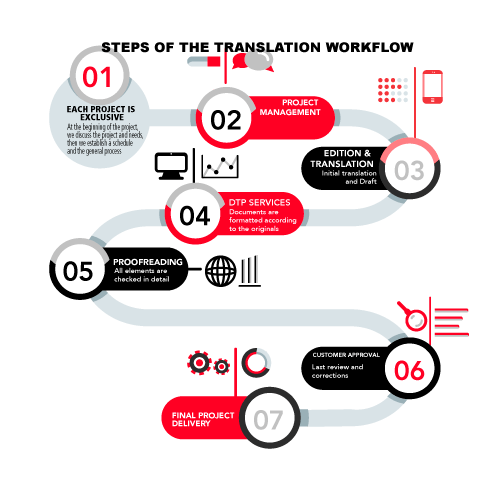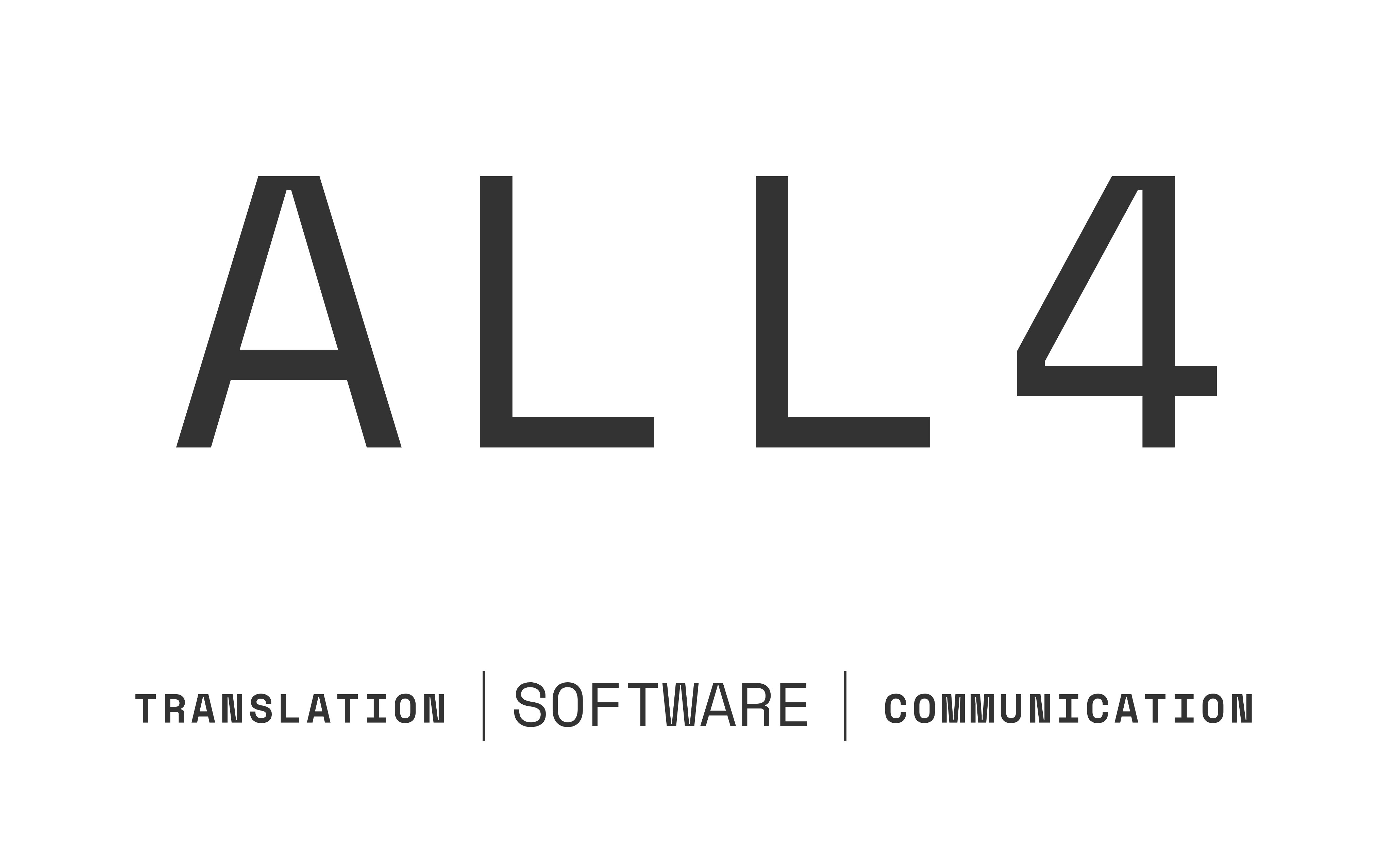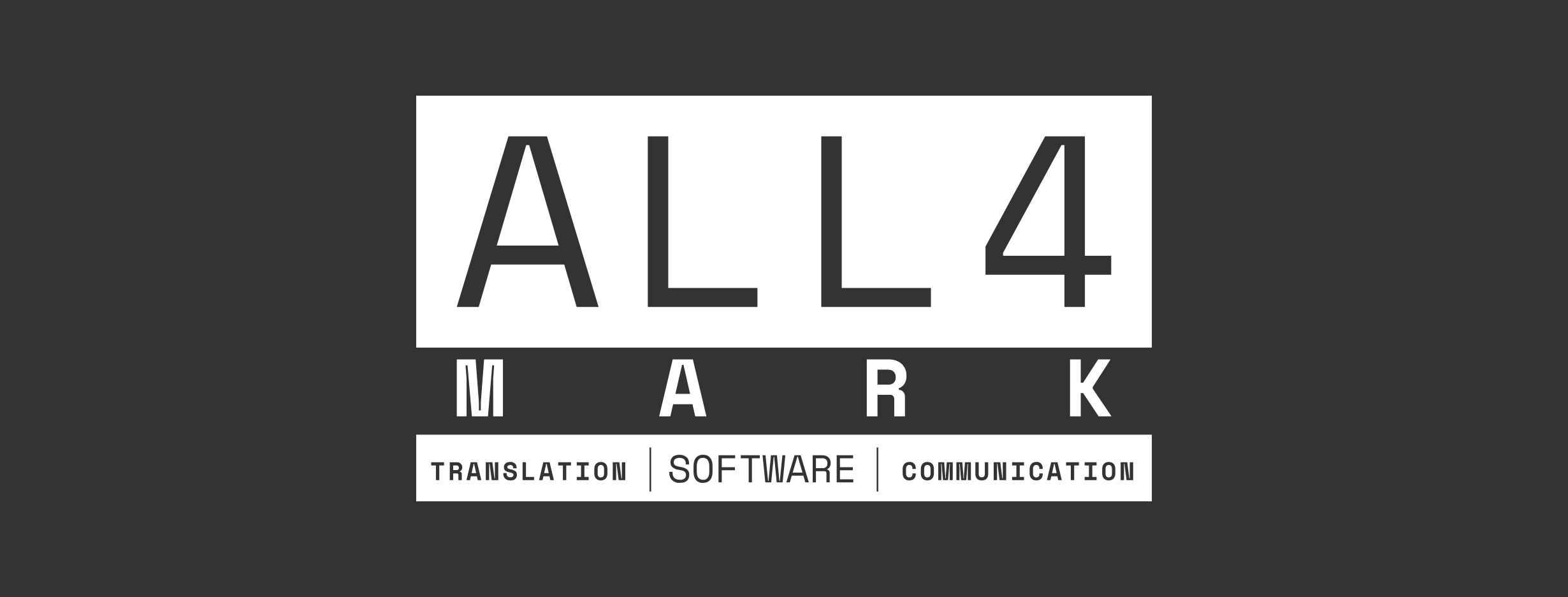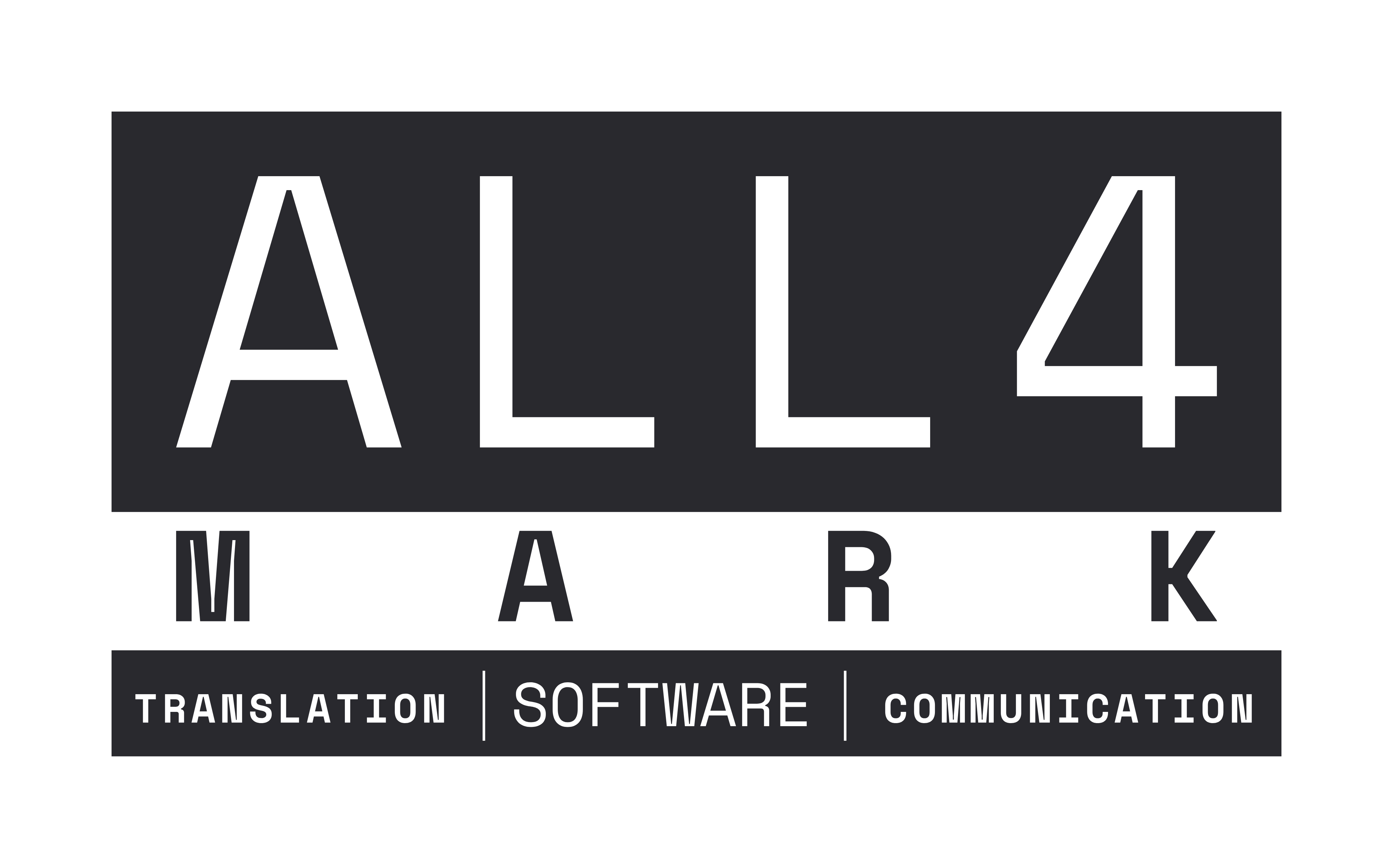Our processes
The first step of our relationship with our customers, which is crucial for creating a continuous translation process, entails recording, and analyzing their current internal processes. All those involved in the internal processes should participate in this analysis, which determines the standard procedure for the creation of translations. All the workflows and process specifications are always well documented and shared with everyone involved in the project.
A standardized translation process that we adapt to each customer, also allows us to plan updates to existing user guides and other technical documents and to implement them without delays caused by missing interfaces, information, or media.
All4 Mark focuses on efficient project management and quality control as the keys to customer satisfaction.
At All4 Mark, we place a strong emphasis on consistency in approach, performance, and continuous process improvement.
We follow a quality control workflow process to ensure that all necessary changes are included in the final translation.
ANALYZING THE PROJECT
All4 Mark evaluates each project using the following criteria:
- Target Language/Audience
- Subject Matter
- Turnaround Time
PROJECT MANAGEMENT
Once we agree to proceed, we will assign a Project Manager (PM) to manage your translation project. Your PM is responsible for selecting the appropriate team of linguists, proofreaders, and industry specialists for your project.
Your PM will work with you from start to finish, ensuring your project is completed exactly according to your needs.
EDITION & TRANSLATION
— Translation
Your project documents are translated from the source language to the target language by our highly-qualified translators.
— Editing
After the translation is done, one linguist and industry expert edits the translated product for contextual accuracy.
DTP SERVICES
Desktop publishing (DTP) services can be a critical element in a translation project. Many translations involve typesetting, graphics, website layouts, etc. Our desktop publishing experts specialize in high-quality, translation-related design services, graphic design, documentation, and graphic localization projects with fast turnaround.
This step is optional.
PROOFREADING
Proofreading in translation is vital when localizing documents for different cultural contexts, as many words whose meanings are the same might require different spellings depending on their intended audience.
Examples might include the US and UK English spellings of ‘LOCALIZE’ and ‘LOCALISE,’ for example.
CUSTOMER APPROVAL
The project delivery implies completion of all verification stages of the document. The translation must respect the client’s instructions on both the linguistic and technical levels, serving the purpose for which it was requested.
FINAL PROJECT DELIVERY
The translated and formatted document is now submitted to the customer.
Large-scale projects involve a final meeting with the customer in which his impressions regarding the process and translation are documented and kept in mind for future projects.




